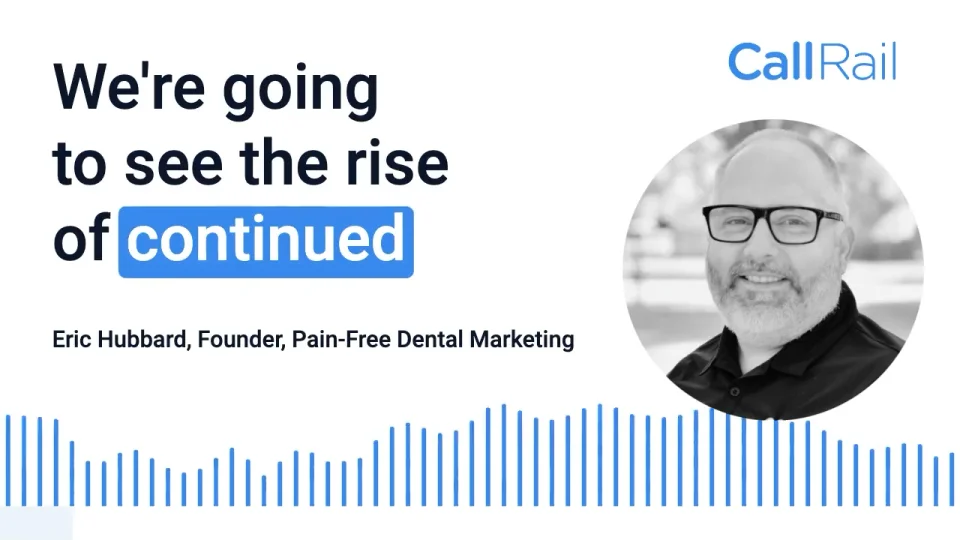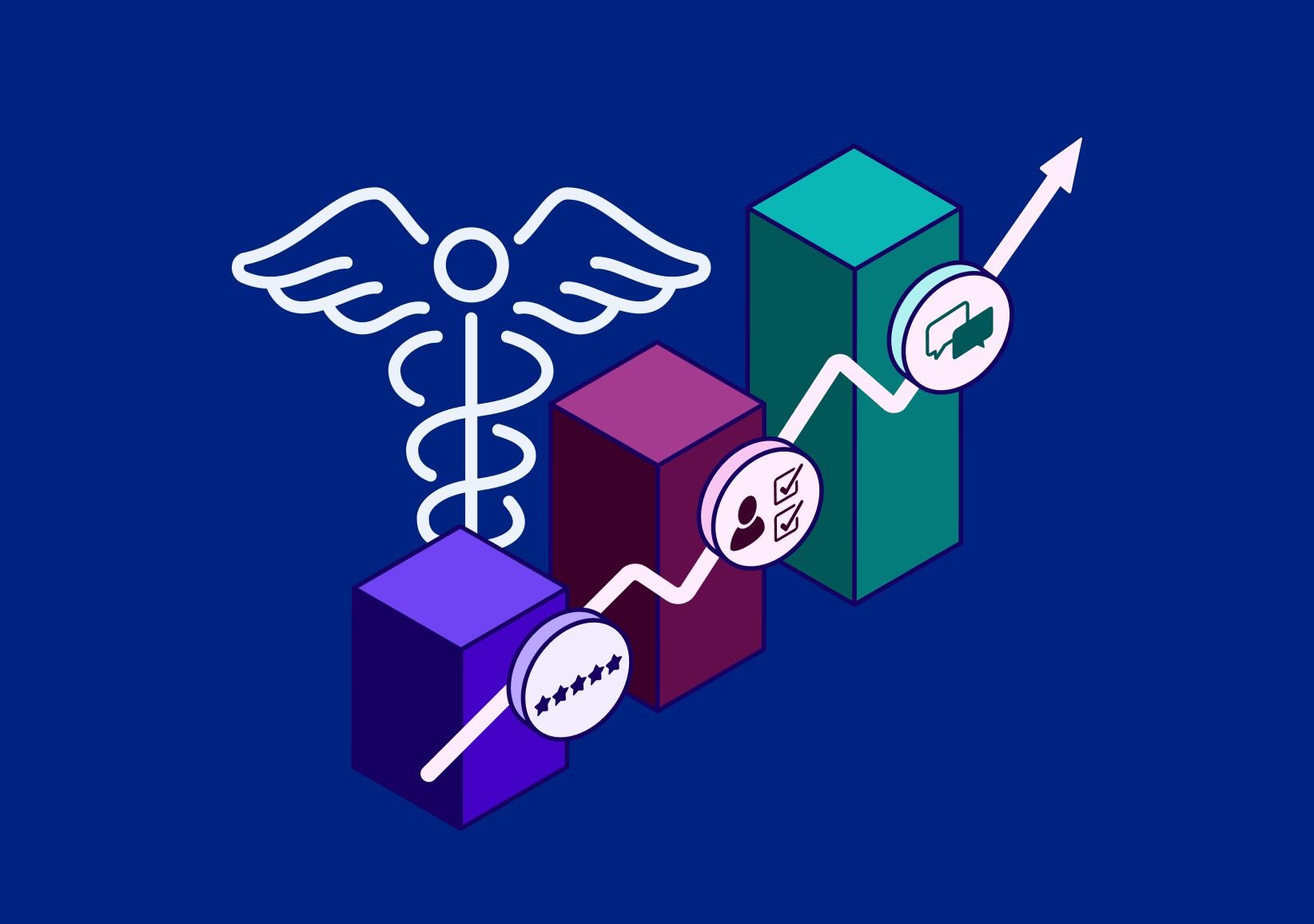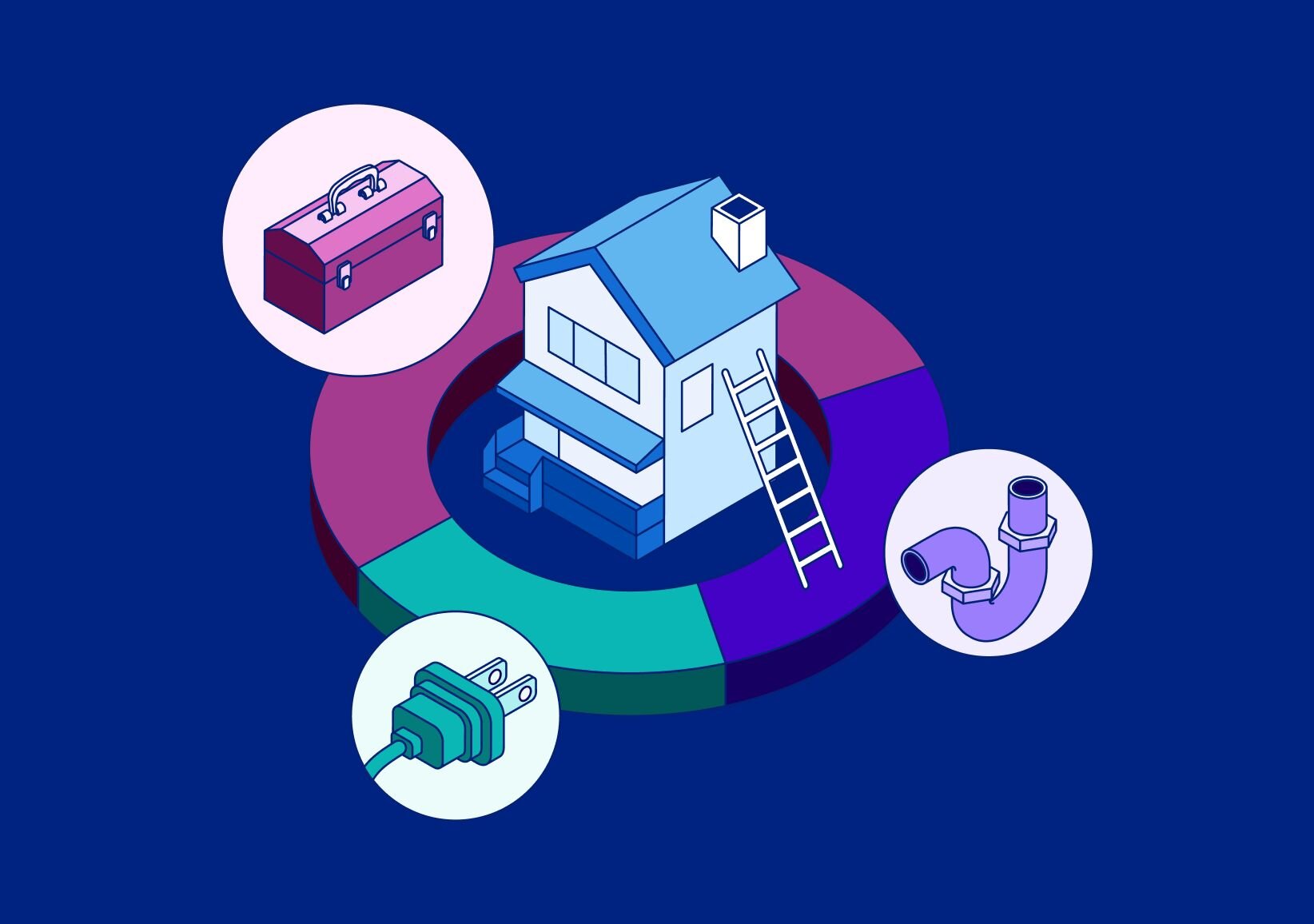Running a dental practice requires wearing a lot of hats. Dentists must keep up with not only clinical advancements in the field of dentistry but also patient expectations, marketing practices, and technological advancements.
To help you keep up, we recently sat down with Eric Hubbard, Founder of Pain-Free Dental Marketing, an agency that specializes in digital marketing for dentists. In this Q&A, we dive into what trends will shape 2024 in the dental industry. Eric and his team work for nearly 100 dentist offices around the country as a fractional CMO and marketing team, which gives them a good pulse on what's happening out on the frontlines of the industry.
Q: Let's start by having you elaborate on how your agency operates as a fractional CMO and marketing team for dental offices.
Eric: A lot of times, dental offices, specifically those that are a two to four-million-dollar operation, have one person who manages marketing. So, we come in and help with everything, including paid media, content, SEO, patient/doctor testimonials, and website development. We act as the internal marketing department of the practice, which even cascades to how they answer the phones. As crazy as it may seem to say this, even in 2023 and moving into 2024, dentistry still happens primarily over the phone.
Q: As you mentioned, there's still a lot of marketing being handled over the phone in the healthcare realm. Why is that?
Eric: The current generation of dentists grew up in an era where if you opened your door and hung your shingle, you would do well. Marketing wasn't something you really had to do well. It's only been in the last five or six years that consumers have associated the idea, "I can book an appointment with my lawyer or nail salon online," with their experience at the dentist. But dentistry has, from a cultural perspective, been very myopic about the consumer experience.
Most dentists don't have the technical capability nor the team to roll out something not phone-focused. Take live chat – they're often terrible at answering chats. They'll go days without responding, and patients will move on, so they've pulled chats off their websites. They can easily answer the phone because it's right there, and that tends to be, from an office standpoint, the path of least resistance. Everyone's trained to know how to do that.
Q: Besides phone calls still being a key marketing channel, what other trends and predictions are you observing in the healthcare space as we approach 2024?
Eric: First, we're in an inflationary period and there's uncertainty around the economy. While healthcare and dentistry have always been fairly recession-proof, and I still think that will be the case, I do expect some slowdown, specifically with cosmetic procedures. Consumers are also more likely to make better decisions and have less risk tolerance. So, I think that the case studies, demonstration of excellence, and social validation are going to be much more important moving into 2024 than they are today.
On the client side, we're seeing a longer decision process than ever. We used to joke that we'd often get a signature during the sales meeting four or five years ago. Today, as far as marketing goes, we're seeing sales cycles closer to 90 days as they explore and weigh different options. So, both the consumer and the business side have slowed down as far as the decision-making process.
Q: What other trends are you seeing, perhaps around technology or digital channels?
Eric: I think we're going to see a paradigm shift, as consumers are more educated than ever, and they want online scheduling. But that has challenges for healthcare providers, and dentists are no exception. Online, it's hard to assess if a consumer needs a normal cleaning or a deep cleaning, so there's a challenge in how to make that work. But I think we're going to see the rise of and continued push for online scheduling. We'll likely see large organizations moving toward it, and that will put pressure on the smaller single operators to roll out online scheduling as well.
Q: That is a major shift for the industry and for consumers. Can you talk a little more about how healthcare marketing, especially dentistry, differs from marketing in other industries?
Eric: Andre, my co-founder, and I came from Procter & Gamble and GameStop. So, a more traditional world of digital advertising. I think healthcare lags behind the industry in its capabilities. Also, If I'm buying a game from GameStop, I know exactly what I'm buying. It truly is a commodity. I think that's probably the biggest difference between traditional online marketing and healthcare marketing. I can't actually sell Invisalign or a hip replacement to a patient. In healthcare marketing, we're marketing the connection between the provider and the prospective patient because that's where we're making our decisions – from this emotional stance.
The problem that we have in healthcare marketing, specifically, is that you don't actually know if your dentist is a good clinical dentist or not. You don't actually know if your hip replacement was clinically amazing or not. If you ask someone what they like about their doctor, they'll say, "They have great bedside manners," or, "They really care about me." We lack the clinical understanding to differentiate an amazing dentist from an average one.
I can sell a connection with a dentist to a patient, and then the dentist can sell Invisign, that nuance may seem easy but is actually very complex. In part because as consumers, we typically want to see a dentist who is within about ten years of our age. If you look at the people who click on ads for a dentist, and as you shift from someone in their early 30s to someone in their 60s, their marketing needs and strategy will change.
Q: You mentioned that dentistry primarily happens over the phone. Are there any changes in the industry that you think will impact the phone experience?
Eric: Over the past two to three years, I think they've started to pay attention to online scheduling. But the unique Picasso of every dentist is their schedule. Most offices tend to be a two-hygiene setup, running three chairs and doing two hygiene checks in an hour. There's a level of complexity to that, and you can't do two implants at the same time. So, dentists need to understand that their schedule can be programmatically built, even if they may not like it. Secondly, there's a fairly heavy lift to go to a dental practice as a new patient – the paperwork and all the work that has to be put in place to bring you into a patient.
Q: Could you also elaborate more on a growing trend among dental offices to drop insurance plans due to falling reimbursement rates and how that impacts how phone inquiries are handled?
Eric: Yes, this is the biggest cultural shift in dentistry. We have more offices dropping insurance plans because the reimbursement rates have fallen dramatically. Some states are 50 or 60 cents on the dollar, and no one wants to work harder for less money.
As a result, "Do you take my insurance?" is the biggest question an office needs to understand how to answer. If you say yes, you probably just overcame the biggest challenge to consumers coming into the practice. But if you're saying no, now you are shifting the culture of answering the phone from an order taker to a sales role. You need to talk about why this doctor is amazing and discuss why this dentist may or may not be the best fit for them. And that cultural shift to how phones are answered as we move to more fee-for-service or less insurance-driven practices is going to be fairly dramatic, especially in an inflationary economy. The dentist’s point of view is going to change from, “I'm looking for anyone who needs a dentist,” to “I'm looking for people who value me as a dentist in my service.”
Keep your dental practice up-to-date with the latest marketing trends.
Learn how Call Tracking for dental practices can help improve your marketing efforts on and off the phone.













